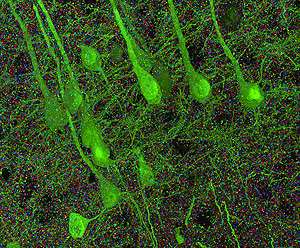
Introduction: The Left Brain and Right Brain Explained
The popular idea that people are either “left-brained” or “right-brained” stems from early studies on how different parts of the brain function. While more recent science shows that the brain is far more interconnected than once believed, the fundamental distinctions still help us understand how people tend to think and learn. The left hemisphere is generally associated with logic, language, numbers, and analytical thinking. People who lean toward left-brain thinking often enjoy solving math problems, following rules, analyzing patterns, and organizing information in a neat and orderly manner. Meanwhile, the right hemisphere is connected to creativity, emotions, spatial awareness, and imagination. Right-brained thinkers are often drawn to music, storytelling, design, and abstract ideas. Even though the two sides of the brain constantly work together, most people have a dominant style that shapes their interests and strengths.
Educational Disciplines and Career Paths
This natural difference in brain function often influences the kind of subjects students are drawn to in school. Left-brain learners often thrive in math, science, engineering, and law—subjects that demand precision, logic, and problem-solving. These individuals may go on to become engineers, accountants, data analysts, or lawyers. In these fields, the ability to work with structure and rules is essential.
On the other hand, right-brain learners often excel in the arts, literature, music, design, and psychology. They may pursue careers as artists, writers, musicians, counselors, or designers. These fields reward creativity, emotional depth, and the ability to understand people and ideas on a deeper level. In truth, no discipline relies entirely on one hemisphere. The best professionals—whether in science or the arts—draw on both logical and creative abilities to succeed.
Blending Left and Right for Success
In real life, the most effective workers are those who learn to use both sides of the brain. For example, a good architect must understand engineering principles to ensure a building is safe and functional, but must also think creatively to design something beautiful and inspiring. A successful teacher needs to plan lessons in a structured way but must also be sensitive to the emotions, backgrounds, and personalities of the students. A business leader must analyze data and build financial models, but also inspire a team and communicate a vision. This blend of left-brain and right-brain thinking—what we might call “whole-brain thinking”—is becoming more and more critical in every area of life.
The Disruption of the AI-Robotics Economy
In the past, most high-paying jobs were based on left-brain skills—logical reasoning, data analysis, and technical know-how. However, artificial intelligence is rapidly changing that. AI systems are now capable of performing many left-brain tasks faster and more accurately than humans. They can write legal contracts, analyze spreadsheets, code software, and even write news articles. Robotics is replacing routine tasks in factories, and algorithms are performing medical diagnoses that once required years of study. This automation of left-brain work is causing a significant shift in the job market. What machines can replicate, they will eventually dominate. That means the human skills that cannot be easily automated—right-brain skills like creativity, empathy, ethical reasoning, and social intelligence—are becoming more valuable than ever.
Implications for Education
This shift challenges schools and universities to rethink how they prepare students for the future. It is no longer enough to train students to memorize facts or follow fixed procedures. The jobs of the future will require people to think across disciplines, adapt quickly, and approach problems in human-centered ways. A computer science student might also need to study ethics and communication. A music student might need to learn digital tools and understand data trends. Education must focus not only on hard skills but also on soft skills—the very things that make us human. Teaching students to be emotionally intelligent, morally grounded, and creatively driven is now just as important as teaching them to code or calculate.
Emerging Careers and Human Advantages
We are already seeing new careers emerge that demand whole-brain thinking. In user experience (UX) design, professionals must combine knowledge of human psychology with technical skills to create tools people enjoy using. In public health, professionals must understand data and disease patterns but also work with communities, emotions, and values. Even fields like marketing, which were once driven mainly by numbers, now demand storytelling, empathy, and cultural awareness. The future belongs to people who can bring all of their brainpower—both logical and imaginative—to bear on the challenges of our time.
Conclusion: A Call for Whole-Brain Development
The old idea of being either left-brained or right-brained is too simple for the world we now live in. In the age of AI and robotics, the tasks that machines can do are multiplying every day. What sets humans apart is not just our ability to reason but our ability to feel, imagine, and care. This means that the most successful students, workers, and leaders of tomorrow will be those who develop both sides of the brain—those who can analyze a problem and dream up a solution, who can crunch numbers, and who can inspire people. Whole-brain thinking is not just a strategy for career success—it is a way of staying truly human in a rapidly changing world.


